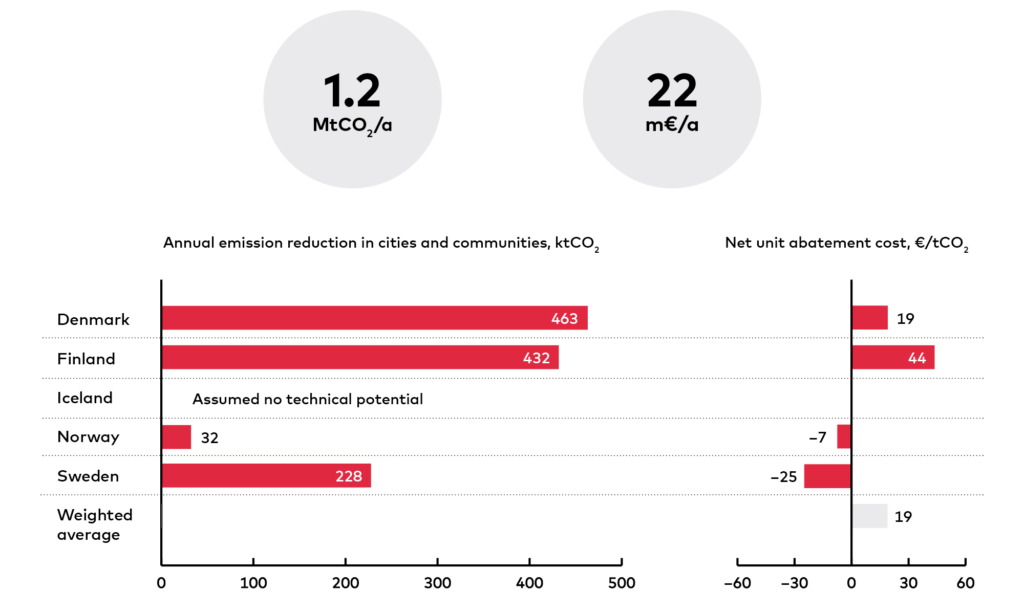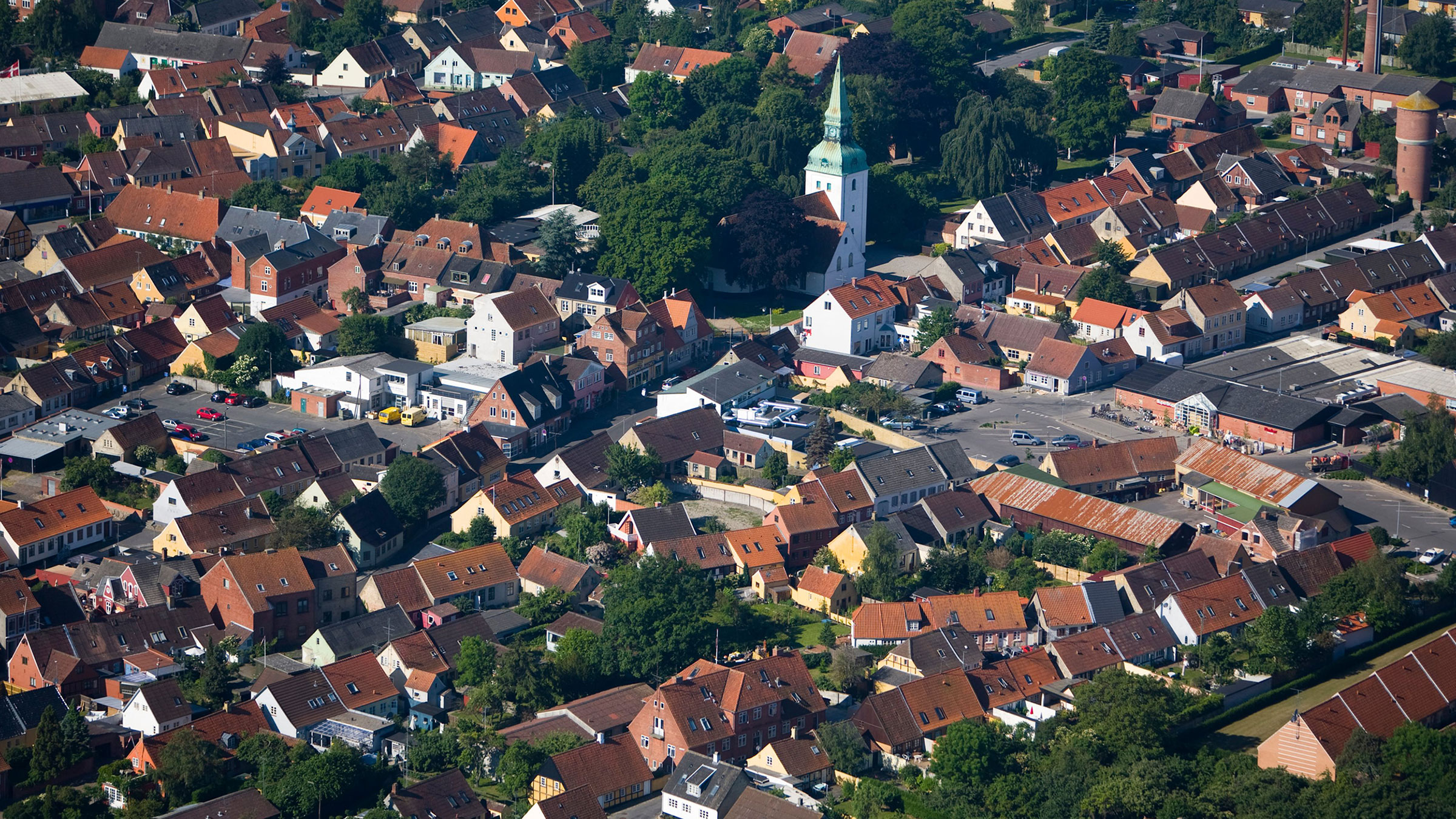Climate impact
The town of Marstal in Denmark decided to demonstrate that district heating can be cost-effective and completely renewable even when more than half of the heat is supplied by solar energy – and have done so since 2013. The district heating company is owned by Marstal’s inhabitants, and their general assembly has taken all major decisions.
The system consists of more than three hectares of solar collectors, two pit heat storages, a heat pump and a biomass CHP plant. Today, 12 GWh or 50% of the district heating in Marstal is covered by solar heat and the heating costs of the small island town have decreased.
Heat provided by solar collectors is carbon free, and the climate impact of heat pumps depends on the emissions associated with the electricity used. If all Nordic municipalities with district heating installed a similar system and produced 12 GWh of district heat with solar combined with heat storage and a heat pump – or in the case of smaller networks, produce up to 50% of their heat with solar – it could replace 4.2 TWh of fossil heat production and decrease emissions by 1.2 MtCO2.
Costs and savings
The cost of the solar thermal system includes investing in solar collectors, heat storage and a heat pump, as well as the electricity used by the pump. Additional costs may come from the possible extension of the district heat network. As the solar system cannot fully replace a heat or cogeneration plant in the district heating network, we compare the system cost to the variable cost of thermal plants. We estimate the weighted average abatement cost in the Nordics to be 19 €/tCO2. The cost varies between the Nordic countries as a result of the differing taxes applied to heat pump electricity.

Other benefits
Replacing fuel combustion with solar collectors and heat pumps cuts air pollution. It also reduces the need to import fossil fuels and increases energy security. As a clear forerunner globally, Marstal’s economy has even benefited from groups visiting the locality to learn about their solution.
Heat pumps can be used to provide flexibility to the energy system.
Barriers
- Solar collector fields and heat storage take up a significant amount of space but should be located close to heat users to minimise losses. It can therefore be difficult to find the required space within existing urban structures.
- A set-up like Marstal’s has relatively high installation costs, which can be seen as risky.
- To reach high shares of solar heat, the system must be complemented by a heat source that is economical to operate even if it is only used during wintertime.
- The intensity of solar radiation as well as the length of the season when the collectors are producing heat also matter for the economy of the solution.
- In some networks, the required district heating water temperature may be higher than can be provided by solar collectors or heat pumps and the heat requires priming. If this cannot be done with existing facilities, it can become expensive.
Enablers
- A large amount of open and sunny space available near the district heating network is needed, but the space can still be used in different ways. In Marstal the solar fields are also used as a grazing area for sheep.
- Enough use hours, relatively inexpensive electricity and high fossil fuel taxes make the system profitable.
- Low network temperature allows the heat to be used without priming.
- To reduce the financial risk and create acceptance among the community that owns the network, the solution in Marstal was implemented in phases.































Recommended
Have some more.